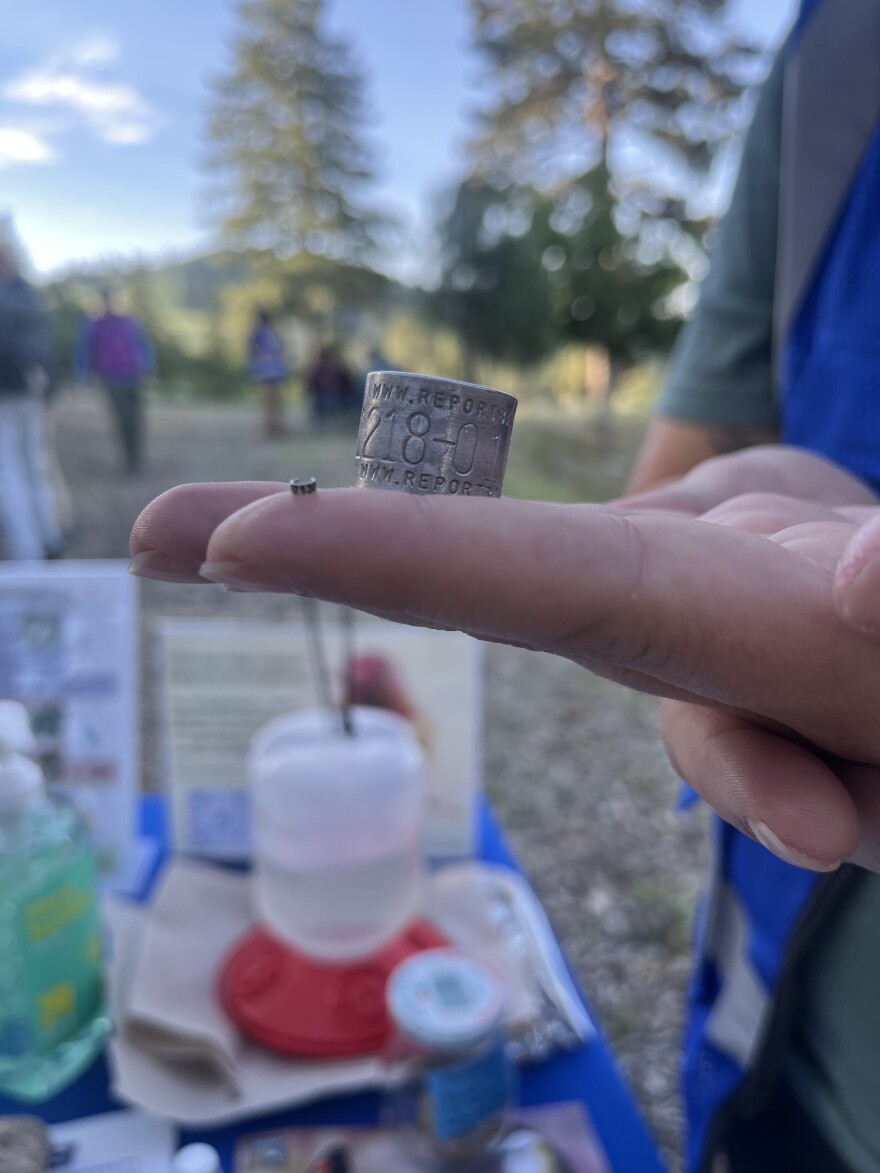Hummingbirds play important roles as pollinators, keeping flower populations diverse and they look pretty cool while doing it in their helicopter fashion. Out of the five hummingbird species, only one of them stays year-round.
The Intermountain Bird Observatory has been recording hummingbird data in Idaho City since 2012 to help their preservation. But this year, they have begun a Bogus Basin Banding location that is available for the public to buy tickets to watch the process
Vicki Rannoe is one of the trapping volunteers. Her job is, as it sounds, to catch the hummingbird with a trap, which is a hummingbird feeder topped with a mesh canopy, and a line tied back to her seat. She told me the process was fairly simple,
"I just let it loose and the trap falls down and the birds are caught in that mesh. And the mesh is really soft, so they can't get hurt against it. They curse in hummingbird as they're trapped in there. They don't appreciate that."
After they’re trapped, they are moved in what looks like reusable fruit mesh bags to a banding location, where banders get to work.

Banders put the hummingbirds in little "burritos," as Christina Hartman told me. This makes it easier for them to keep the bird contained while they check items like pollen color on beak, which can indicate which flowers the birds are visiting, and weight, which for this petite Calliope female, is around three skittle candies, or two and a half grams.

The bird is then fitted for a band which is like a tiny anklet with an ID number, that will correspond to all of the data collected for that individual bird. This way, if the bird is caught again, researchers can see how things have changed — such as if and how the bird's wing length changed.

Heidi Ware Carlisle, the Education Director at IBO, shared their current focus while banding is checking breeding conditions — this requires keen eyes.
"So just like human moms, I have two kids. Their bellies are a little bit squishy after they've recently laid an egg. And we can see that so we can move the feathers out of the way and see that squishy belly."
They can also check to see if females have swollen ankles, meaning they’re incubating an egg, or if they have bugs in their throat — indicating the eggs have hatched and she is feeding babies.
But what about the males? Well, Ware Carlisle told me they have an easier summer.
"So they're here to find a mate, mate and then leave. So what we're starting to see with the males already is they're heading south for the winter on July 3."
Females will fly south by around August, and babies will leave a bit later – knowing their way purely with instincts. Most of the species in Idaho will make around a 2,000 mile journey to northern, central and southern Mexico.
With hummingbirds coming back to Idaho around Tax Day, this gives the researchers a short window of time to collect their data. Ware Carlisle told me she is hoping to utilize to get more and more public engagement with.
"As scientists, we could do all the research, know exactly the problem and what needs to be done. But we don't have the power by ourselves to get conservation done. We need citizens, politicians, everybody on board."
That starts with people like Novella Cerio, who got to hold a hummingbird for the first time and shared her thoughts of the experience.
"I love feeling its heartbeat because it felt fluffy and cute."
If you’re interested in supporting hummingbirds like Novella, Ware Carlisle says you can start by planting local wildflowers and putting out a hummingbird feeder in your yard. But you should clean the feeder every two days to prevent diseases from spreading.



